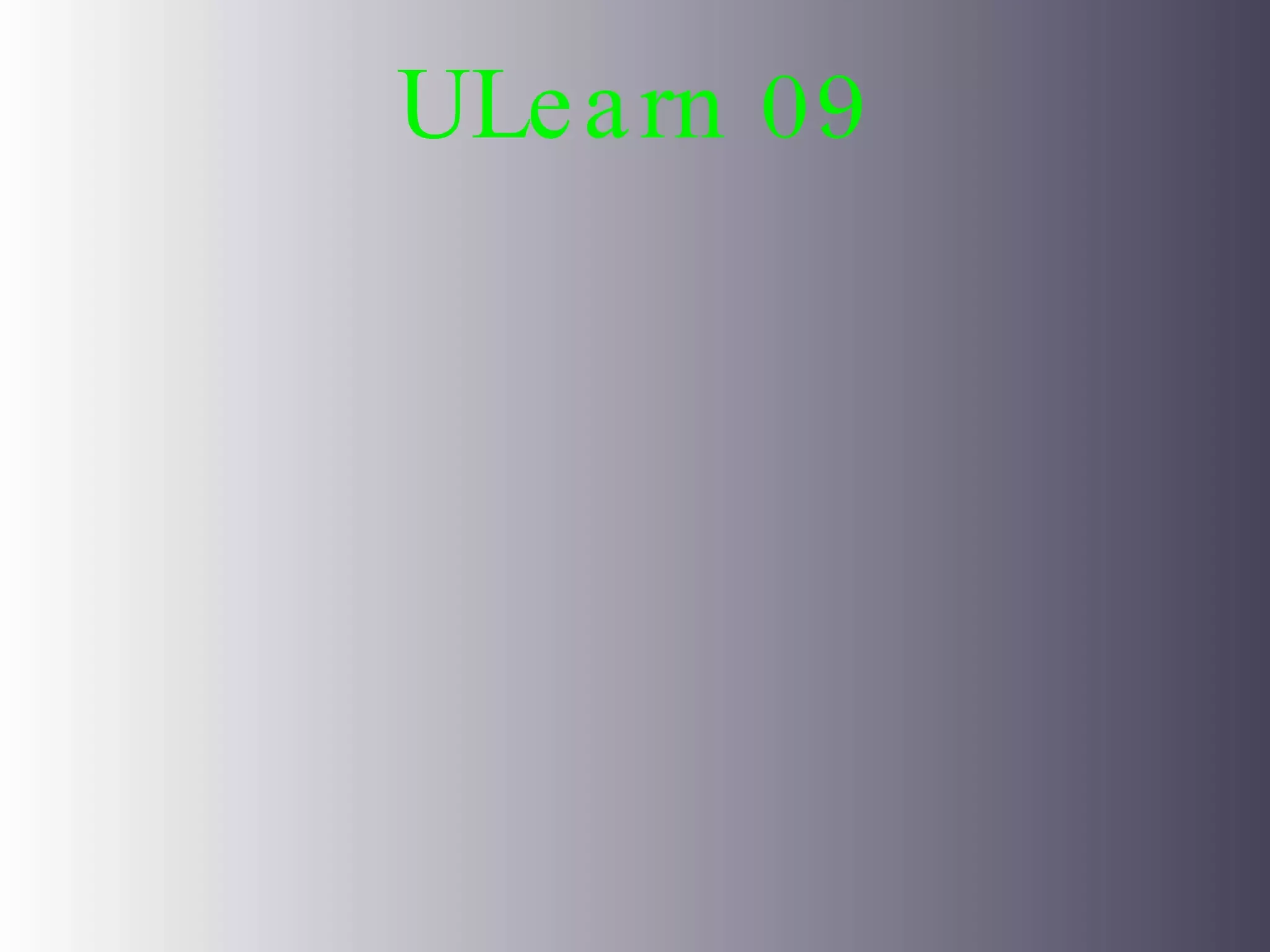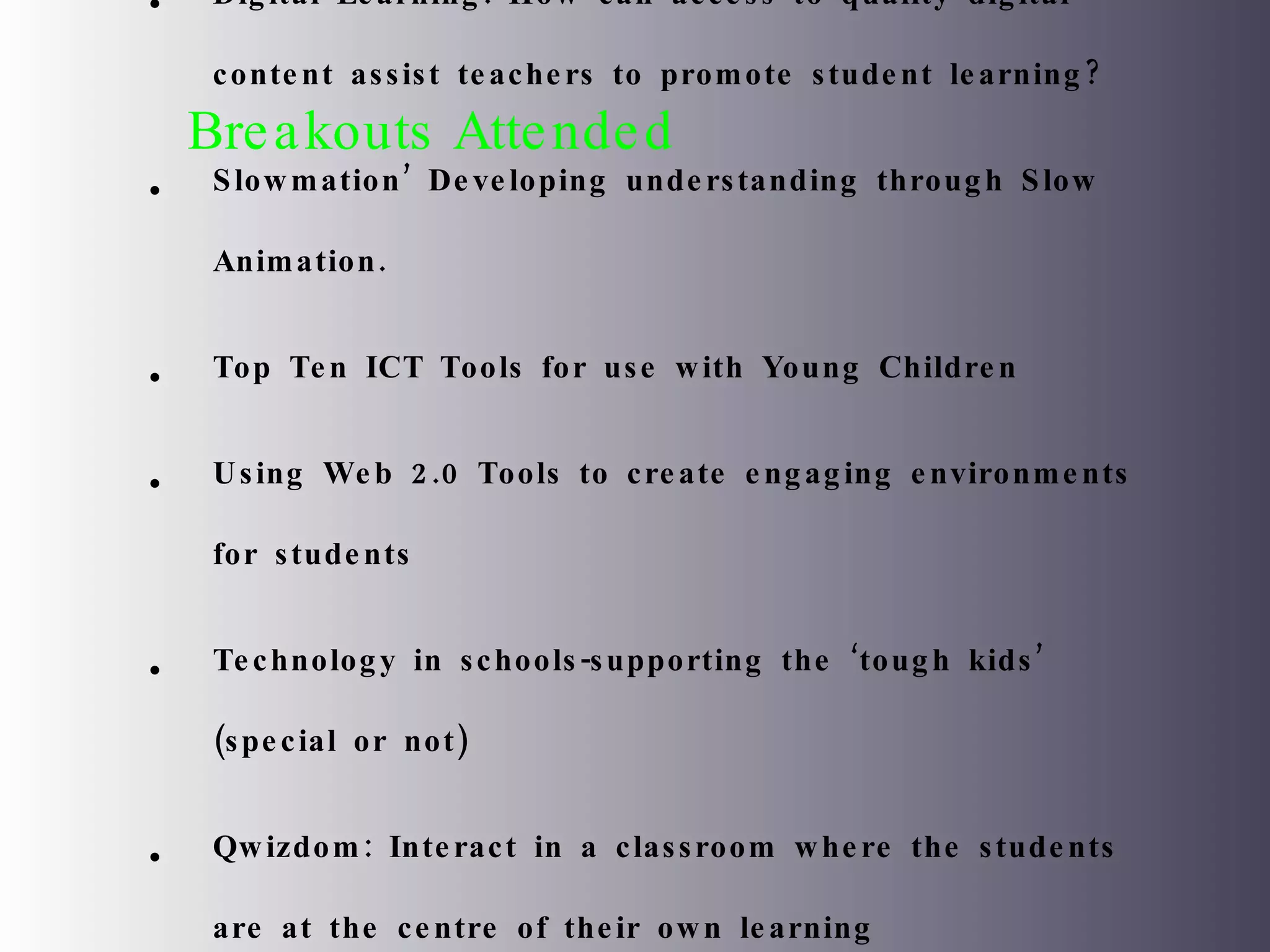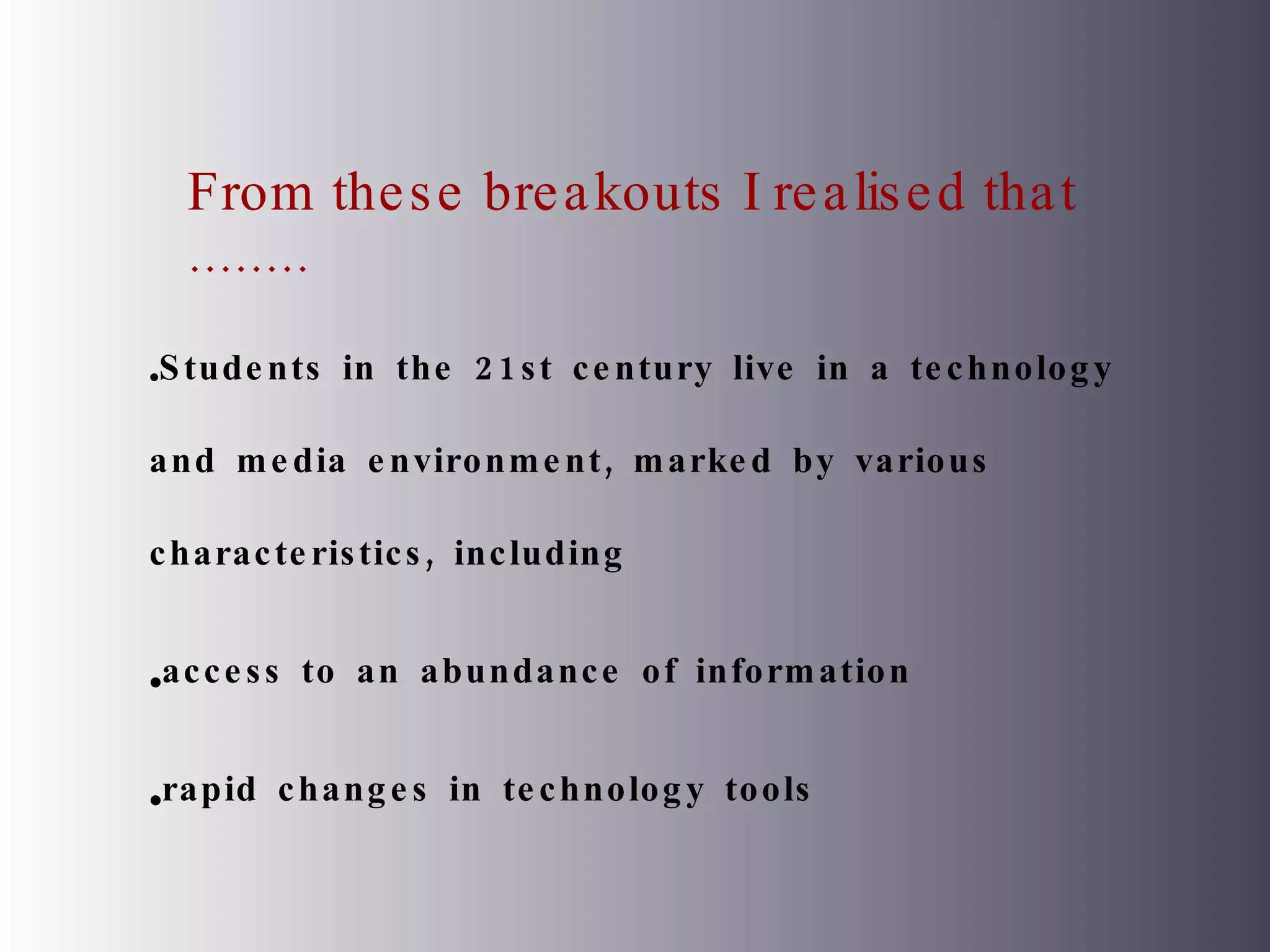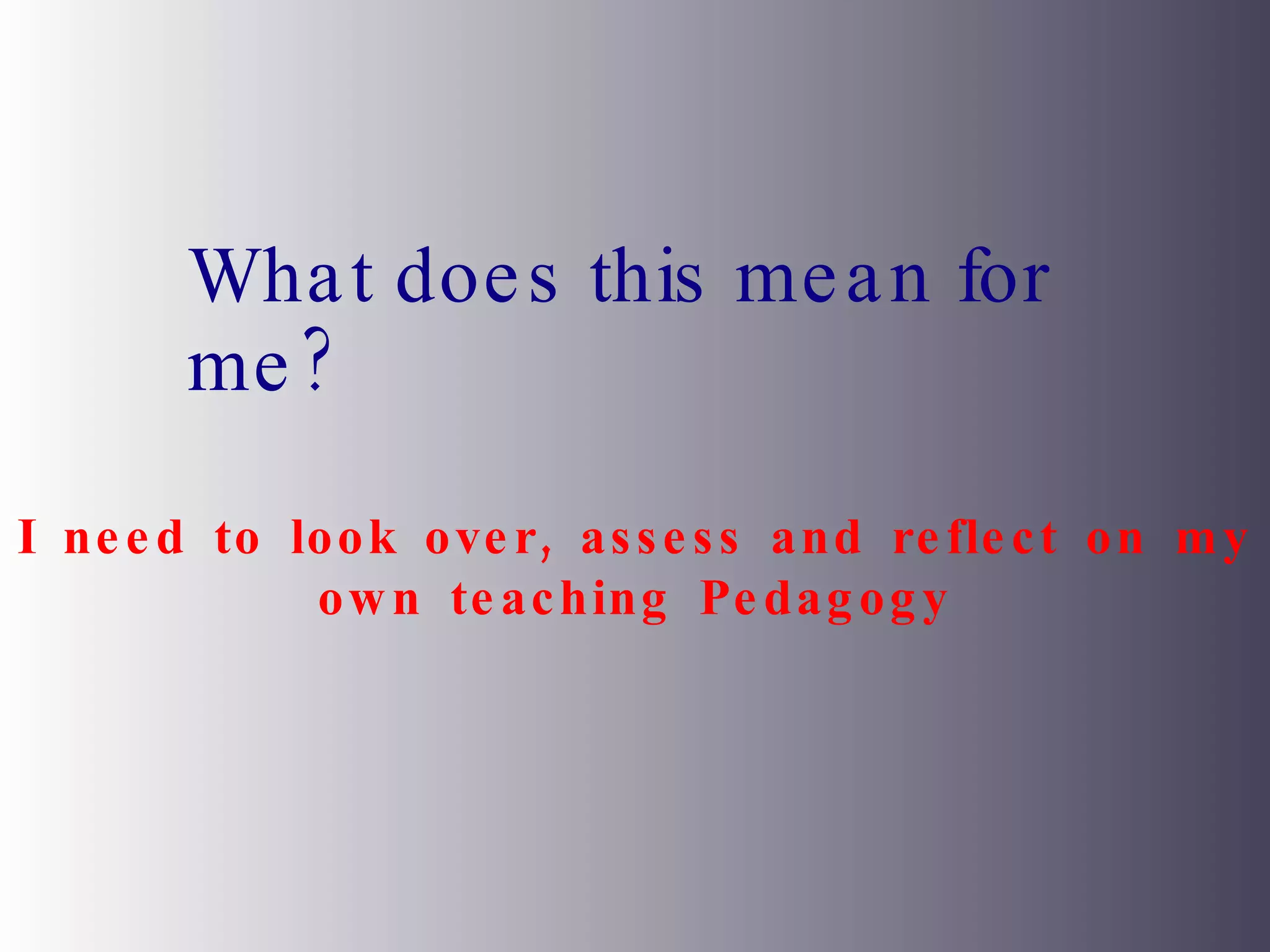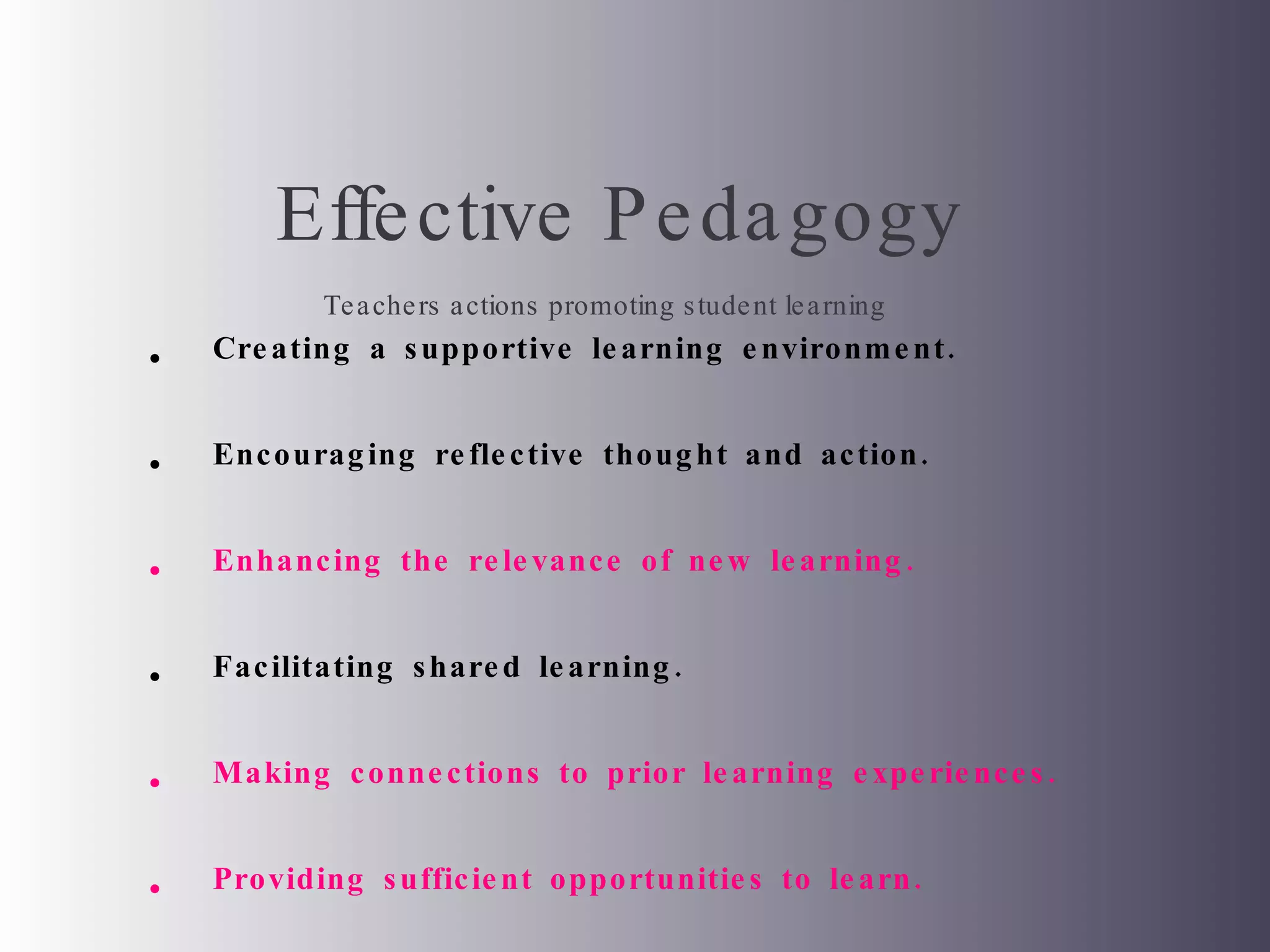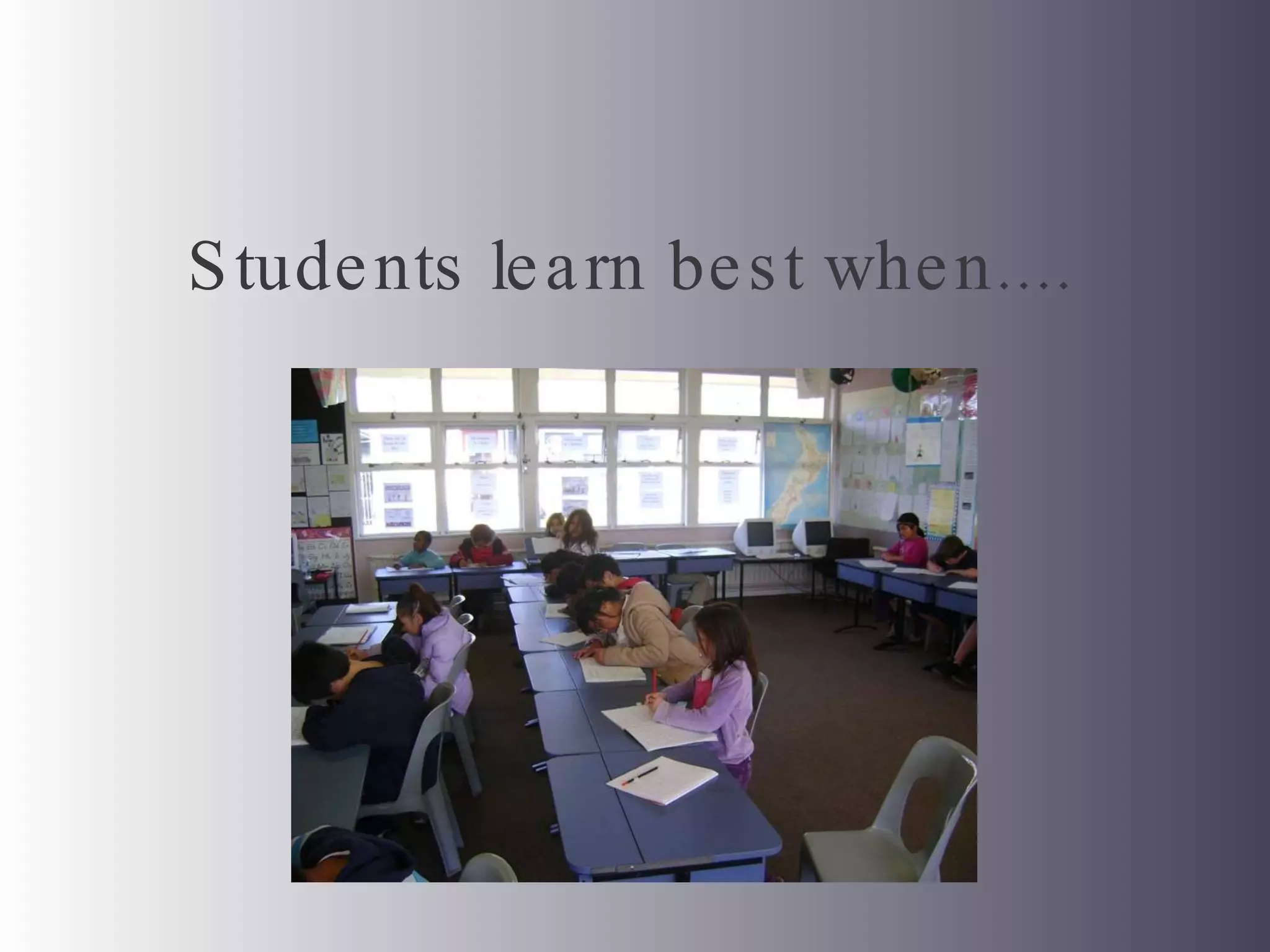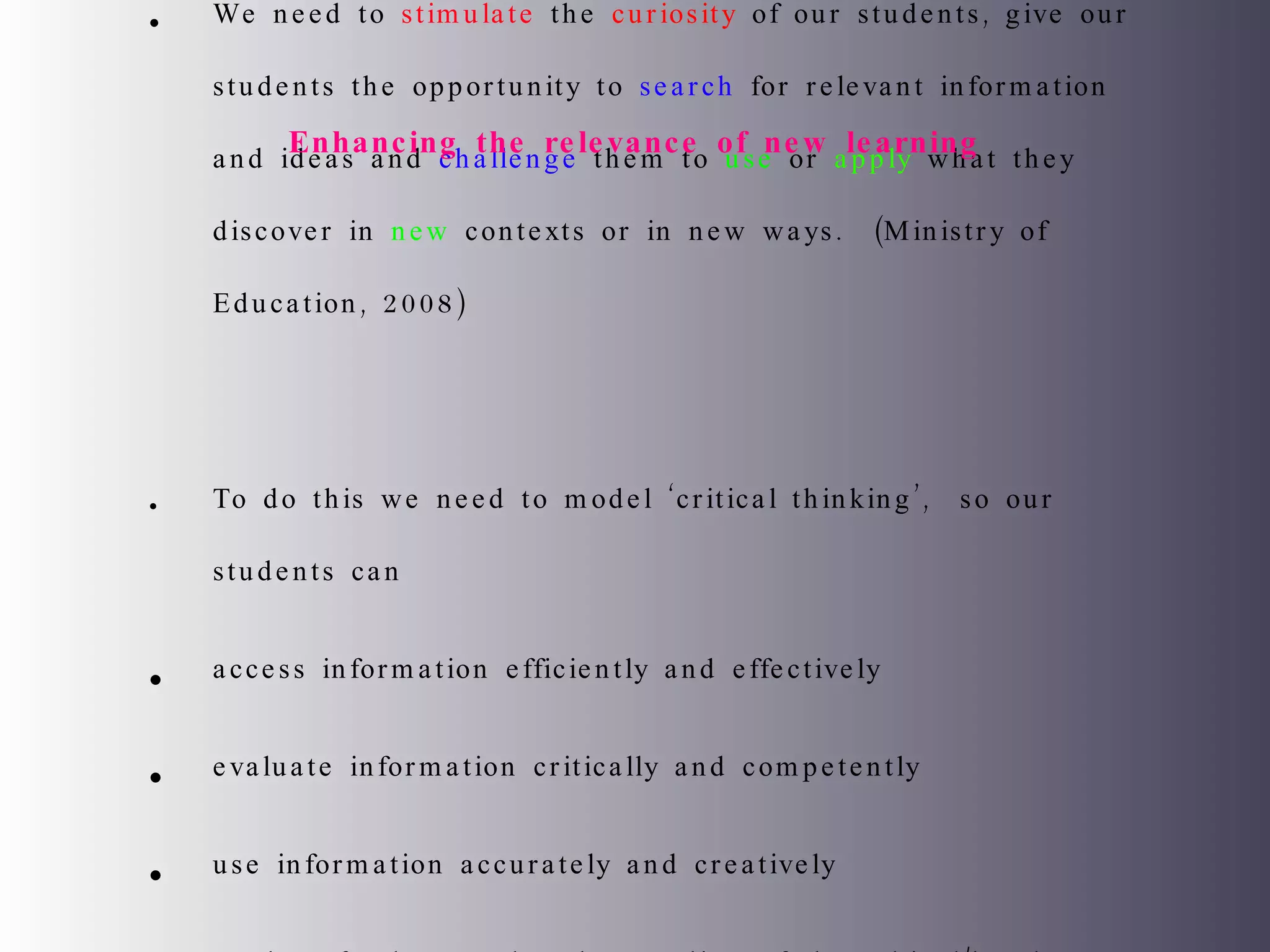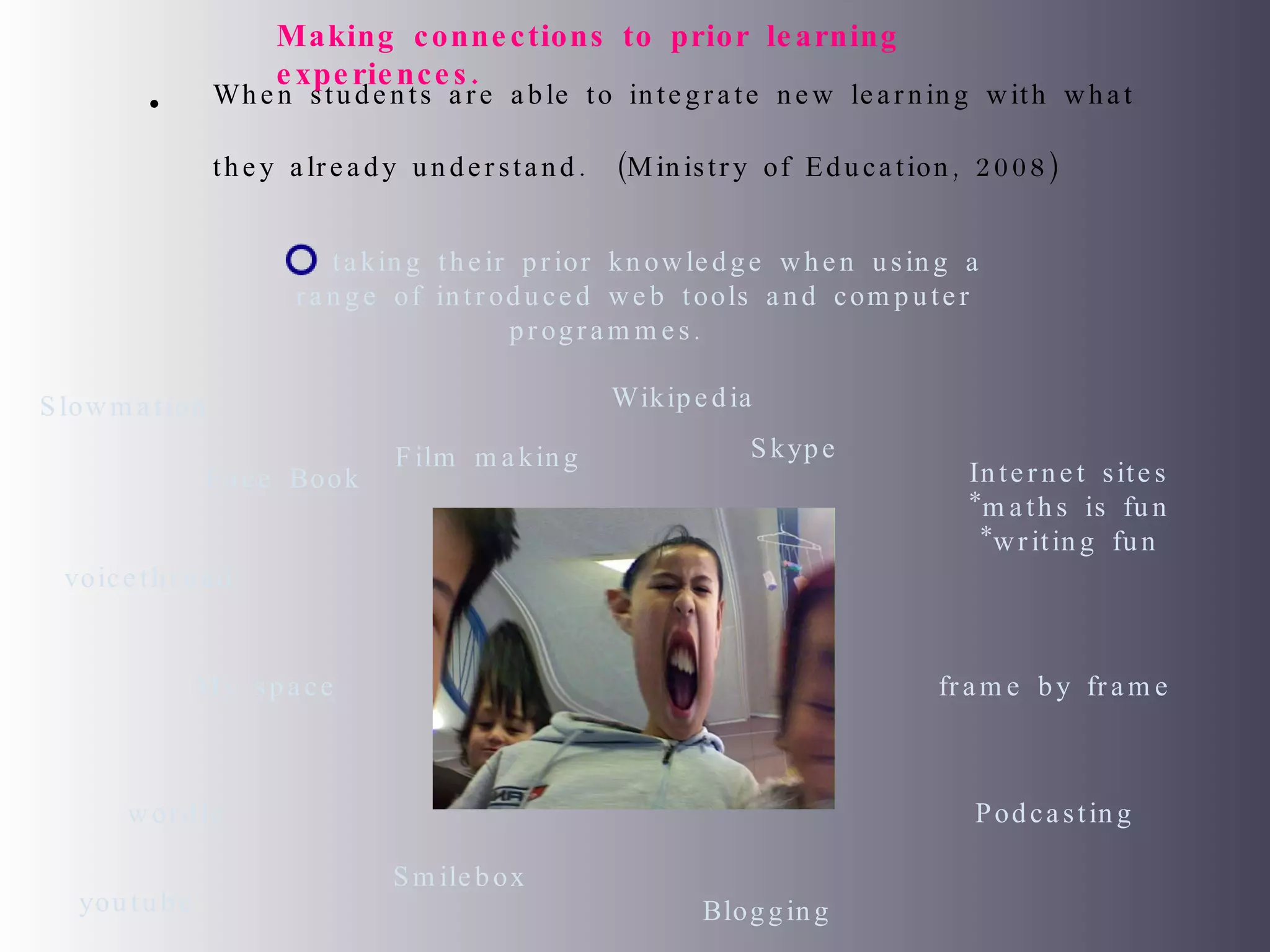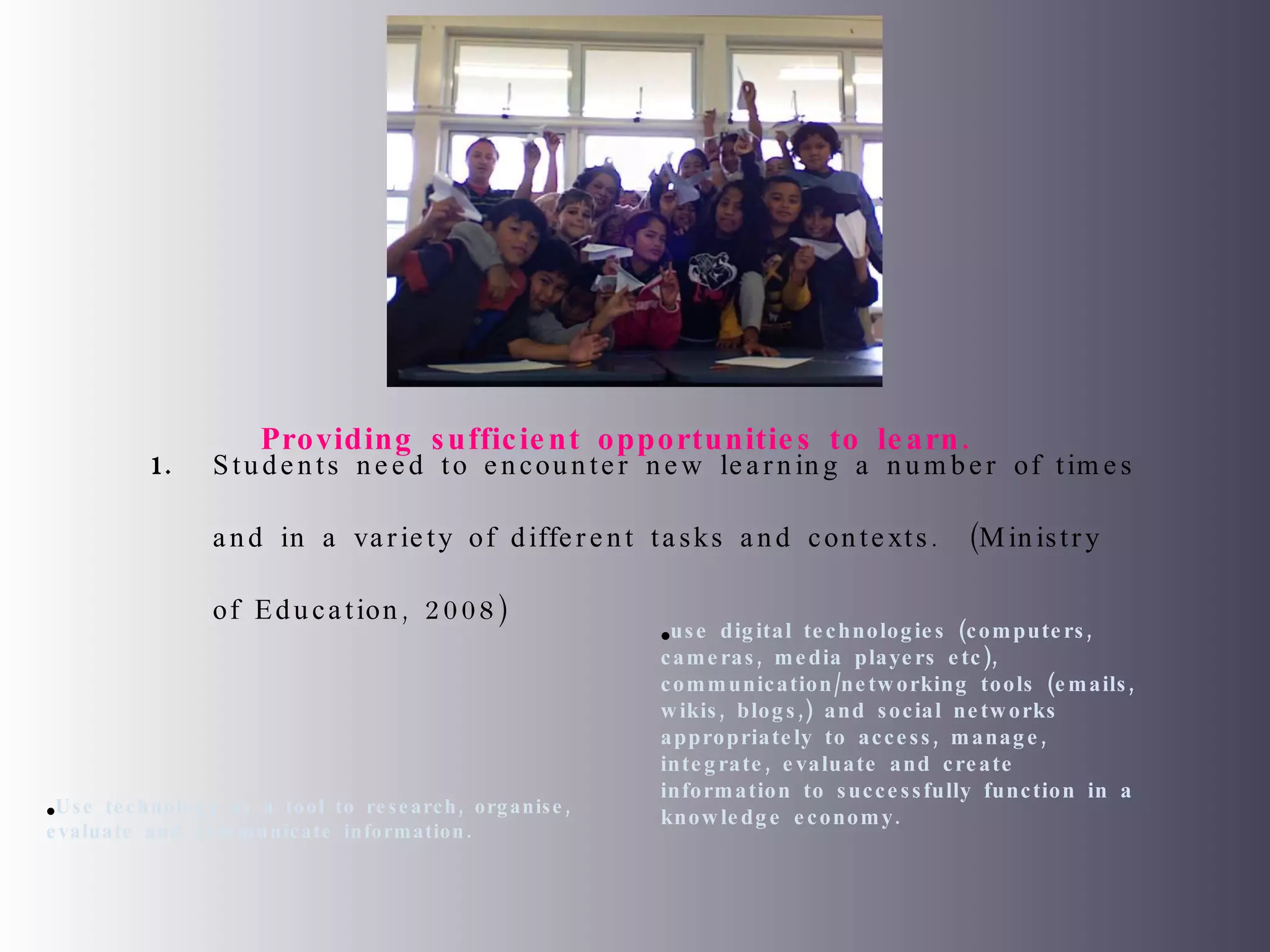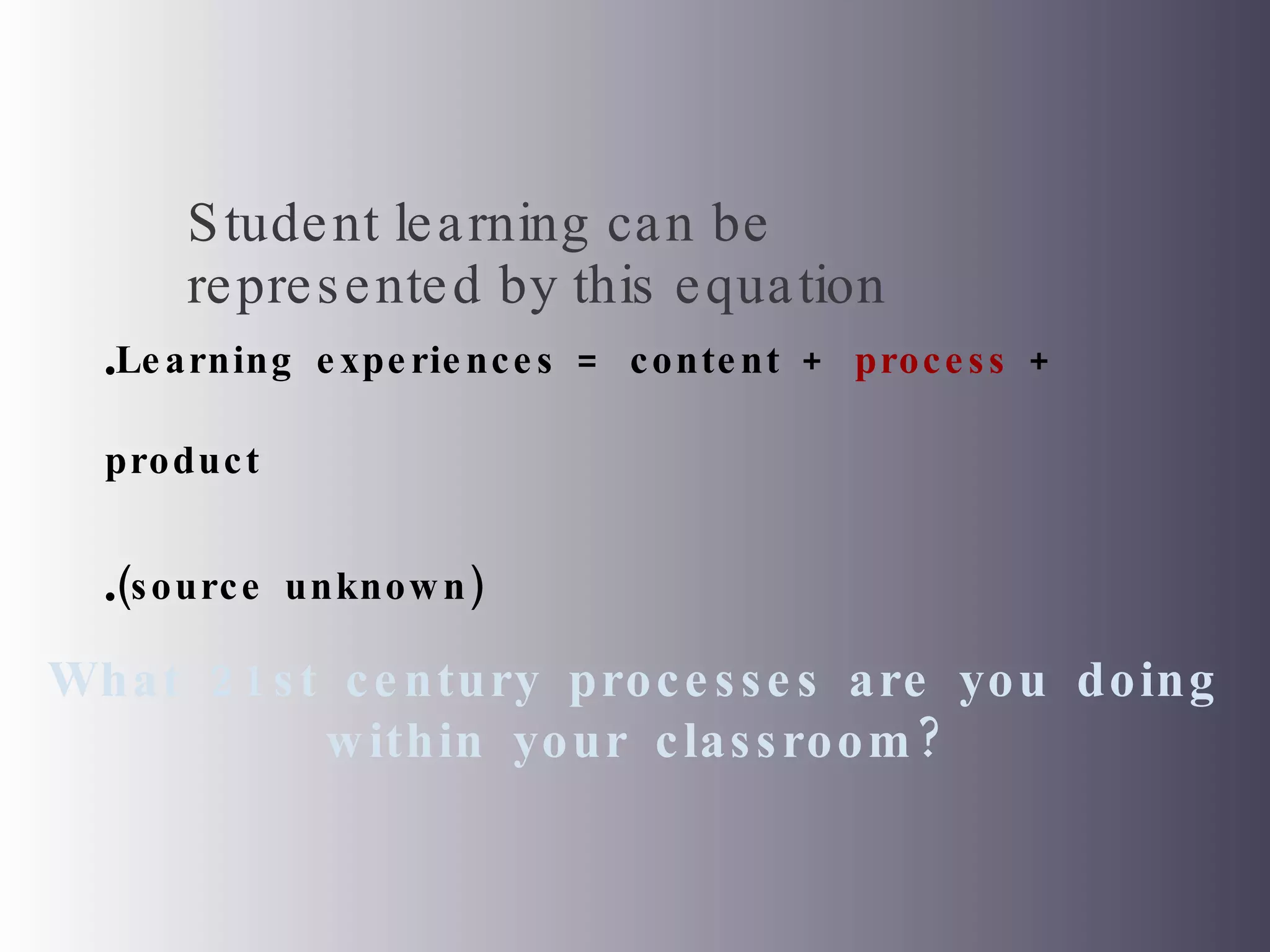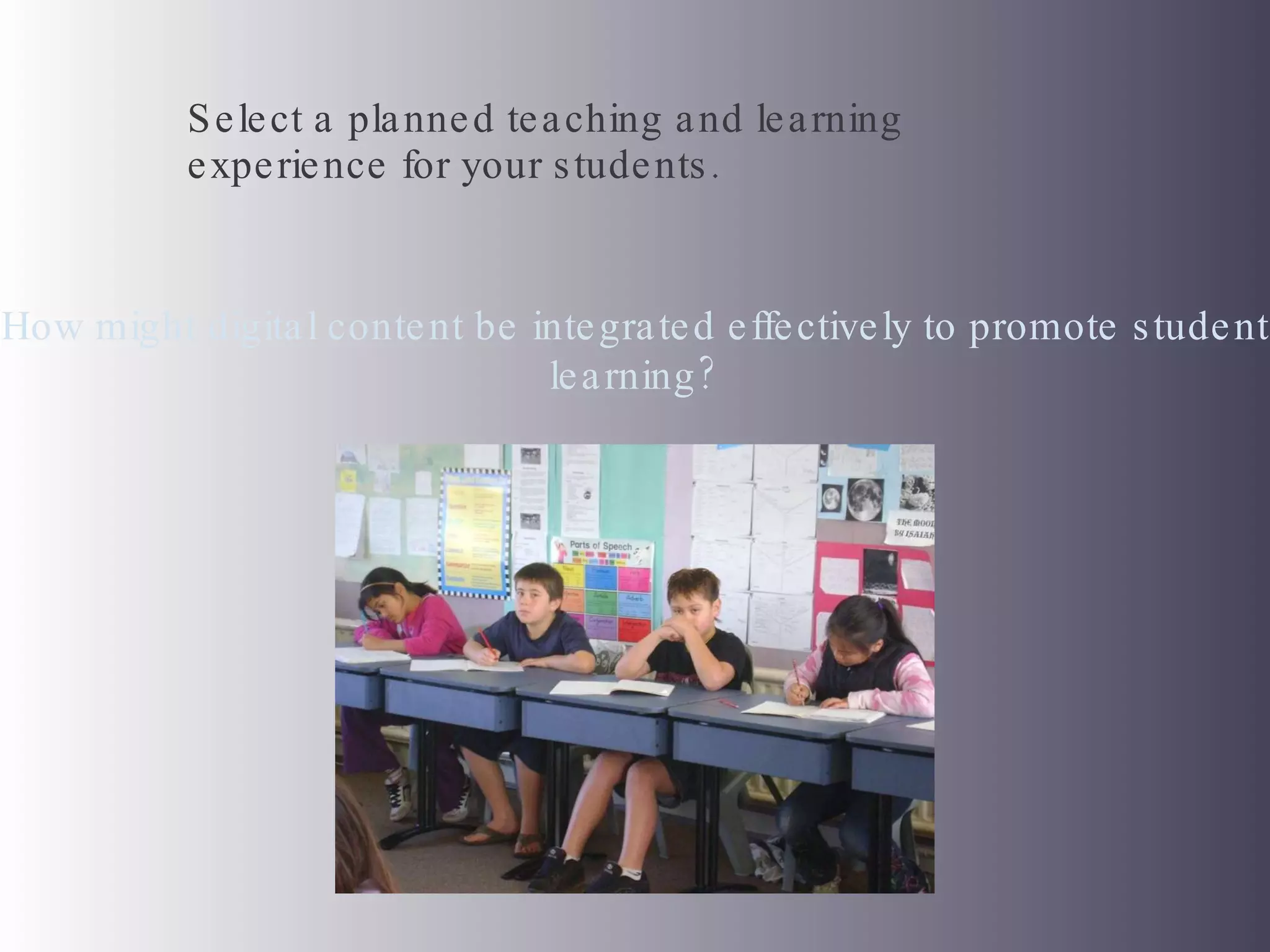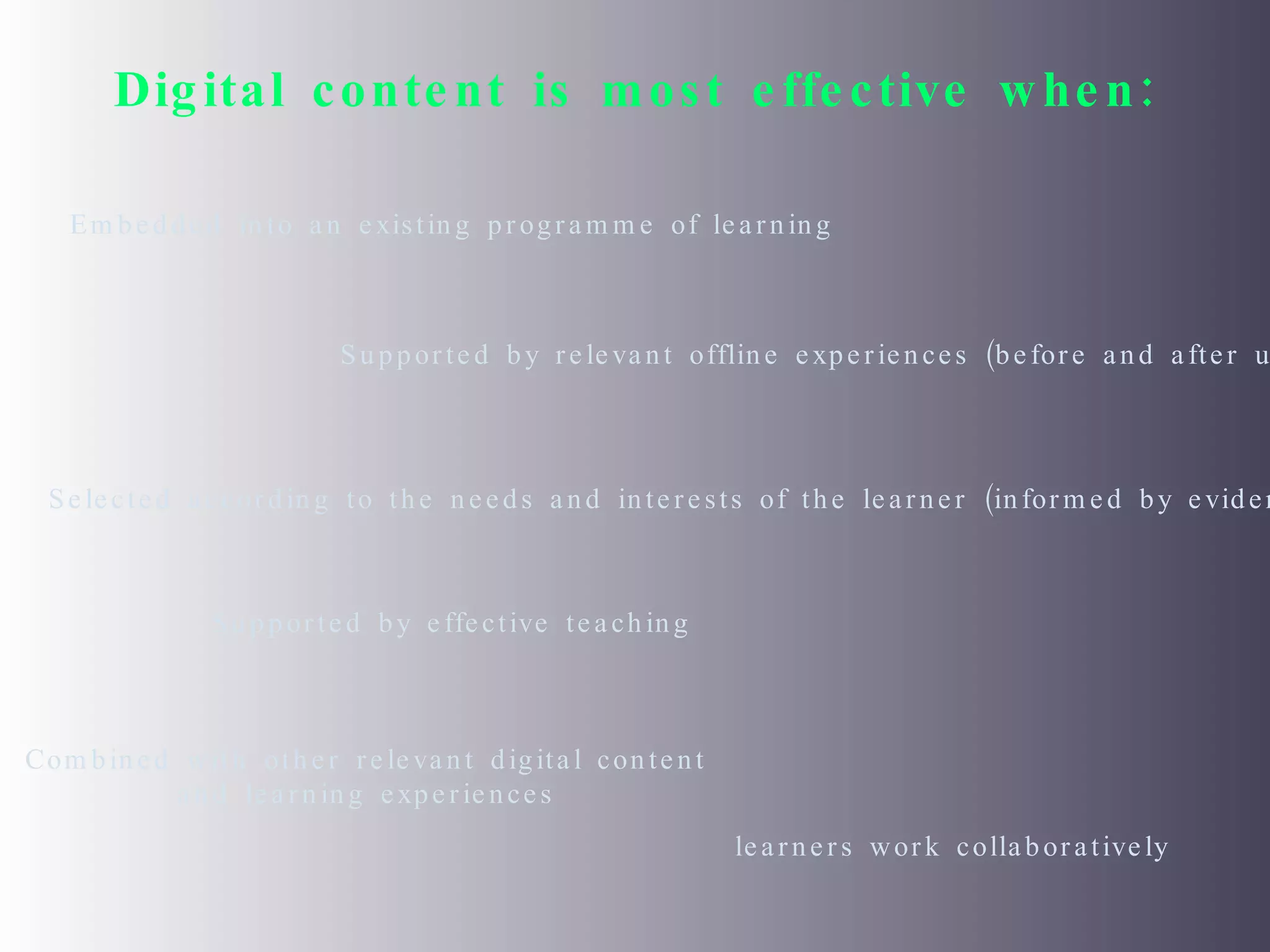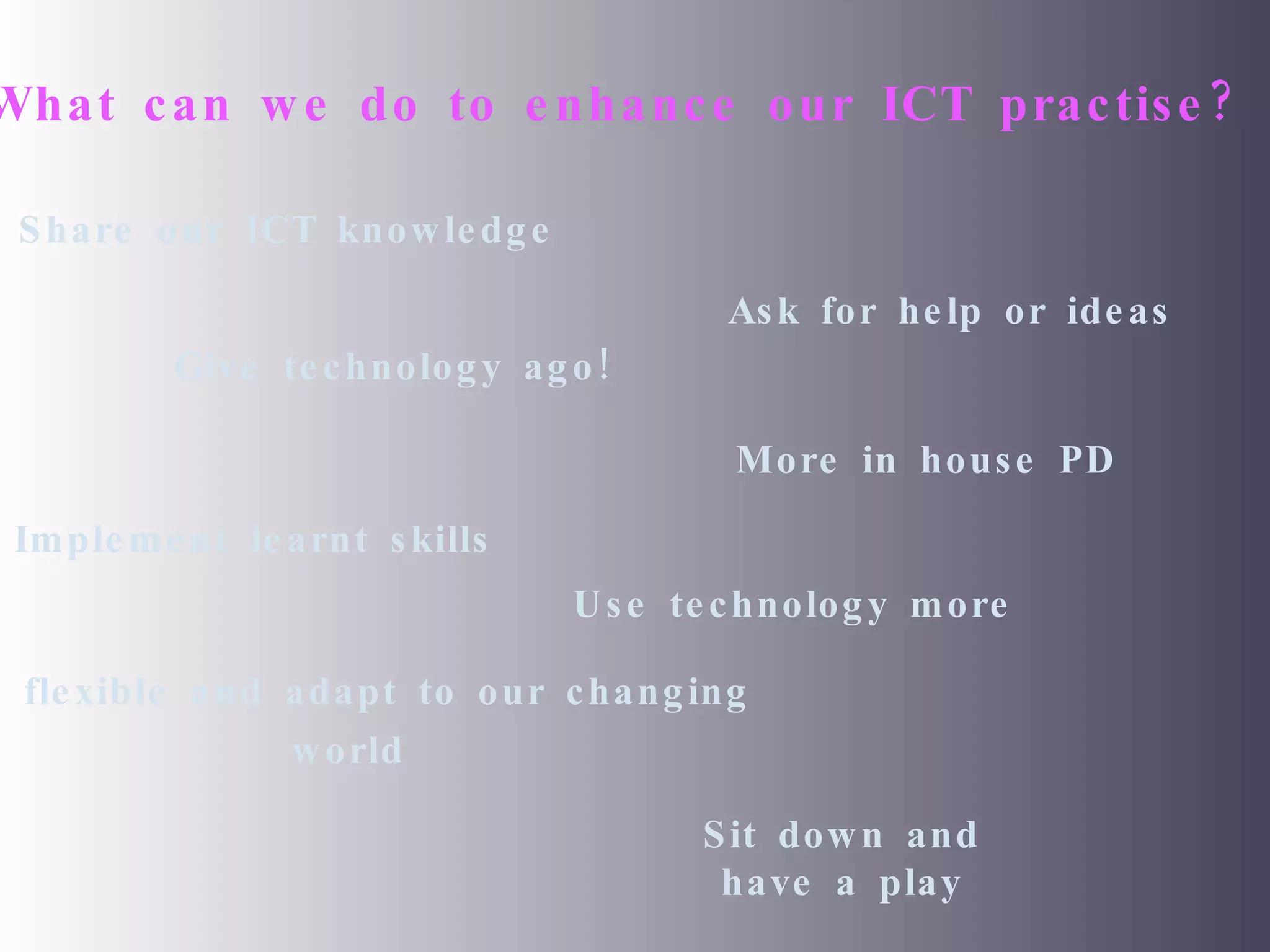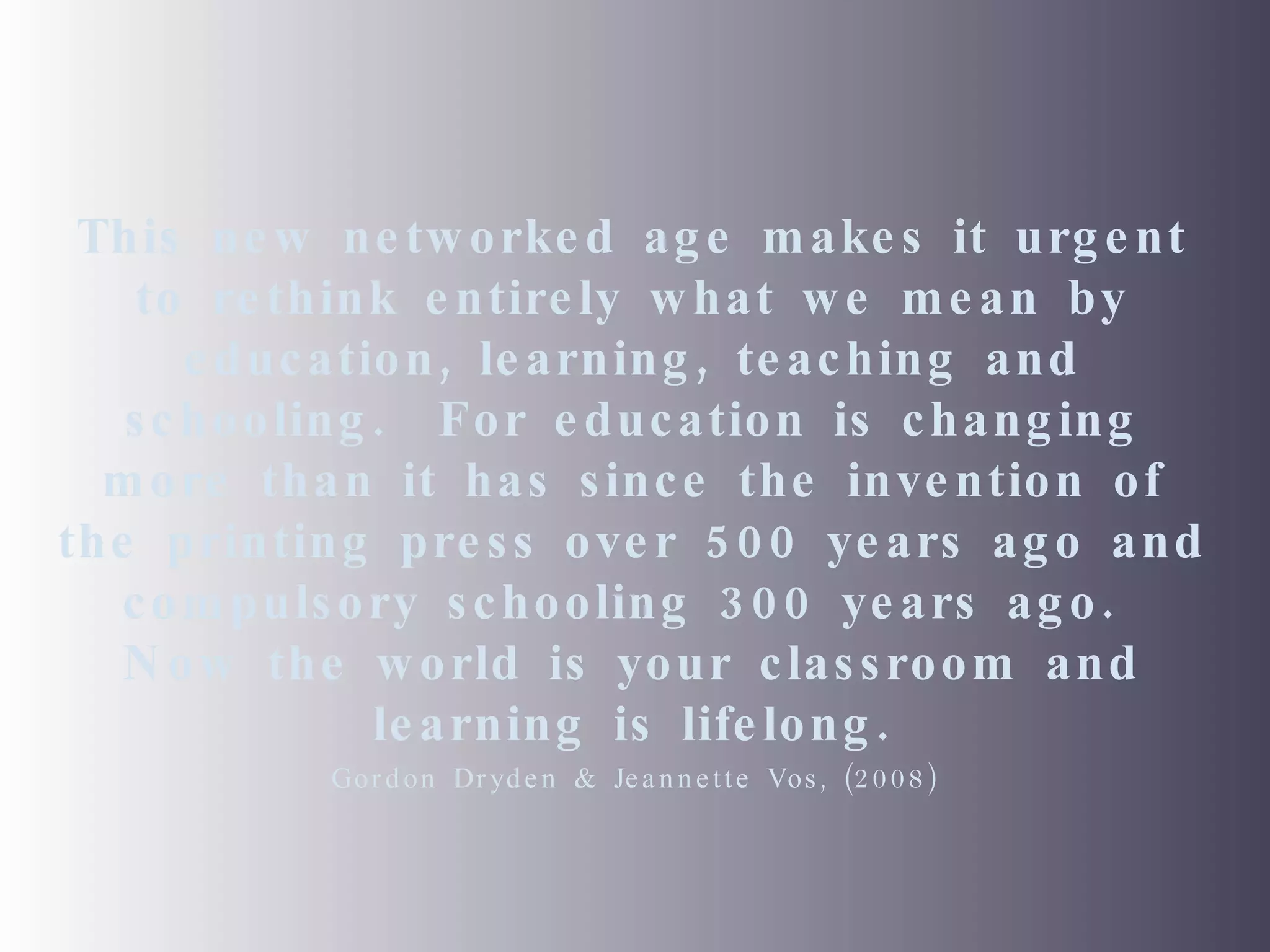The document discusses using technology and digital content in the classroom to promote student learning. It emphasizes that students today live in a technology-rich environment and teachers need to reflect on how to effectively integrate technology into their pedagogy. Some key strategies discussed are using technology as a tool for research, communication, and project-based learning; selecting digital content that is relevant to students and supports offline learning experiences; and providing multiple opportunities for students to engage with new concepts through a variety of tasks and contexts.
